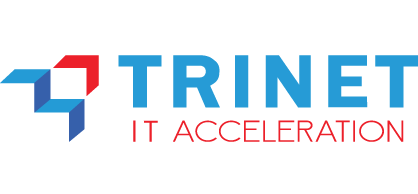Tech Innovation > Networking > Application Delivery Controller (ADC)

Application Delivery Controller (ADC)
In today’s digital era, web and cloud-based business applications must have high performance, reliability, and optimal security. An Application Delivery Controller (ADC) is a technology designed to manage, optimize, and secure application traffic, ensuring maximum availability and performance for users.
Without a Application Delivery Controller (ADC) solution, organizations face the following challenges:
High Downtime & Latency
Applications may experience disruptions or slow access due to server overload.
Traffic Imbalance
Traffic is not well distributed, causing heavy load on one server while others remain idle.
Weak Application Security
Without proper filtering, applications can become targets of cyberattacks like DDoS, SQL Injection, and API Exploits.
Lack of Scalability
Applications struggle to grow according to business needs due to network infrastructure limitations.

Key Features & Capabilities
Application Delivery Controller (ADC) optimizes traffic, enhances security, and ensures high availability.
Show Details
a. Intelligent Load Balancing
Directs application traffic to the best-performing servers: Prevents overload by ensuring optimal server utilization.
b. Global Server Load Balancing (GSLB)
Manages cross-data center traffic: Ensures optimal performance across multiple locations.
c. SSL Offloading & Acceleration
Processes SSL/TLS encryption/decryption on ADC: Reduces the load on backend servers.
d. Traffic Optimization & Compression
Reduces latency: Achieves HTTP compression and TCP optimization for faster performance.
e. Application Firewall & Security Controls
Detects and blocks application-based attacks: Protects against SQL Injection, Cross-Site Scripting (XSS), and API Abuse.
f. Support for Hybrid & Multi-Cloud
Enables traffic distribution between on-premise and cloud environments: Provides greater flexibility.
g. AI-Powered Traffic Analytics
Analyzes traffic in real-time: Identifies anomalies and optimizes performance using AI-based insights.

Business Benefits
Application Delivery Controller (ADC) ensures reliable application delivery, optimizes performance, and strengthens security.
Show Details
a. Enhance Application Performance & Reliability
- Load balancing prevents server overload & ensures 99.99% uptime.
- Latency is reduced through efficient traffic optimization & caching.
b. Strengthen Application Security
- SSL Offloading enhances encryption protection without burdening the backend.
- Layer 7 Security Filtering prevents application exploitation from cyberattacks.
c. Flexible Scalability & Operational Efficiency
- Enables seamless deployment across on-premise, cloud, or hybrid environments.
- AI-driven analytics help organizations understand traffic patterns & application usage trends.
d. Reduce IT Infrastructure & Operational Costs
- Traffic consolidation & caching reduce unnecessary bandwidth consumption.
- Automation & policy-based routing reduce the need for manual intervention.

Use Cases
Application Delivery Controller (ADC) optimizes application delivery, enhances performance, and secures across industries.
Show Details
a. Banking & Financial Services
-
Ensuring online banking applications remain responsive & secure from DDoS attacks or fraud.
b. E-Commerce & Retail
-
Optimizing online shopping experiences with load balancing & traffic caching.
c. Government & Public Services
-
Providing e-government services with high availability & sensitive data protection.
d. SaaS & Cloud Providers
-
Managing traffic across various cloud environments for optimal application performance.

How It Works
How Application Delivery Controller (ADC) optimizes application delivery, improves performance, and enhances security:
Show Details
a. Traffic Enters the ADC Before Reaching the Backend Server
-
Traffic is directed to the ADC before reaching the backend servers.
b. ADC Evaluates Traffic & Routes Requests to the Optimal Server
-
The ADC evaluates the traffic and routes the requests to the most optimal server.
c. Load Balancing Distributes Excess Traffic Across Servers
-
If traffic is excessive, load balancing distributes it across multiple servers.
d. ADC Activates Caching & Compression to Reduce Latency
-
The ADC activates caching & compression to reduce latency.
e. ADC Performs Filtering & Mitigation Against Cyber Threats
-
If there are cyber threats, the ADC performs filtering & mitigation before traffic reaches the backend.
Contact our experts for further information












